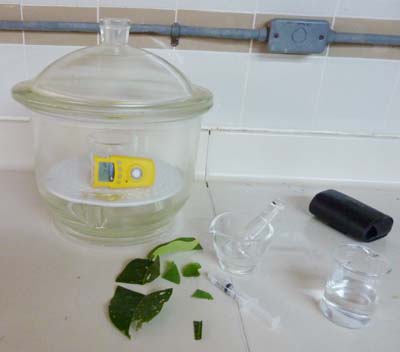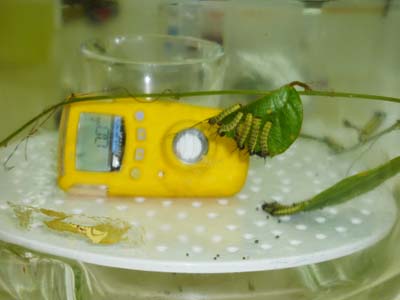HCN detoxication/metabolism hypothesis. Many species of Passiflora and most species of Heliconius produce cyanide gas (HCN) when crushed. Biological cyanogenesis of this type results from specific biochemical mechanisms, usually including a cyanogenic glycoside and a specific enzyme for hydrolyzing the glycoside and releasing the HCN gas molecule. Recent studies have revealed a tremendous elaboration of these compounds and accompanying enzymes within the genus Passiflora, as well as a poorly understood but demonstrable interference between the different hydrolytic enzymes. These findings suggest that herbivore species such as H. sara may be able to interfere with the HCN release mechanism of the P. auriculata host plant, enabling the larvae to sequester and metabolize the cyanide nitrogen rather than release it to the air or the body tissues (Engler et. al. 2000). This may provide a nutrient boost to the larvae, enabling them to grow faster and/or larger. This type of specialized digestive/metabolic mechanism could account for some of the specialization, and hence species diversity, in the herbivore community that feeds on Passiflora. It could also possibly account for the parallel community structure between the Heliconius and the flea beetles, if they respond in the same way to the various cyanogenic properties of their common host plants. Toward this goal, in April 2011 I carried out a preliminary survey of cyanogenesis in field-collected Passiflora at la Selva, using techniques shown below in the photo. The micromoles of HCN produced per gram of plant tissue are shown in Table 1. It is important to note that this preliminary survey was limited to new and mature leaves on one plant from each species, not sampling intraspecies variation at all. A much more thorough survey will be needed to adequately represent cyanogenesis among La Selva Passiflora. List of articles relating to biological cyanogensis in Passiflora and its herbivores


continue reading ongoing results, photos, etc. or return to summary page